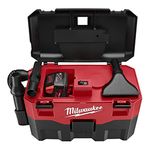Nail Guns for Joist Hangers
Fast and accurate, these pneumatic tools put framing connector nails right where they're needed.

Synopsis: Metal connectors are becoming the norm on homes today. In this article, a framing contractor reviews five pneumatic nailers specifically designed for metal connectors. He explains which models are the safest, most accurate, and most durable.
With building codes more stringently addressing natural disasters, I see more metal connectors on my job sites. Until I bought a metal-connector nailer, I needed a lot of time and hammer-swinging to nail on all the code-required connectors.
These nailers are designed to orient and then precisely drive code-approved 1 1⁄2-in. to 2 1⁄2-in. 0.148-in. to 0.162-in. dia. full round-head nails through metal-connector holes. Some of the guns are set up to locate the hole by using the nail tip as the guide, while others use a probe tip. All nailers have restrictive sequential triggering, which means there’s a specific order of operation to get the gun to work: aligning the nail, depressing the safety and then firing the gun with the trigger, which prevents bump- and double-firing. This precaution is essential on tools where exact positioning is more important than speed. To avoid jams and misfires, some adjustments must be made on some nailers when different-length nails are inserted into the magazines.
I looked at five metal-connector nailers and evaluated several features and functions of each tool: nail-loading system; adjustment for nail length; connector-hole pinpointing system; use in tight quarters; nail-drive depth; and tool weight. Here’s what I found.
Hitachi NR65AK is an accurate lightweight
Hitachi uses a sliding plastic gate at the back of the magazine to accommodate different nail lengths. The tool has two positions: a lower one for 1 1⁄2-in. nails and an upper one for 2 1⁄2-in. nails. The gate can’t be readjusted until the magazine is emptied.
Once the gun is loaded, it’s fairly easy to see the nail point and register it to a hole. In tight locations, though, I had to cock the nailer sideways, which lifted the nail point and safety off the work. Then, of course, it wouldn’t fire. It’s important not to push the tool forward after locating the nail point in a hole because doing so bends the nail from the collation strip, causing a misfire or jam. This was mostly the case in difficult-to-reach locations where my arm wasn’t steady.
The NR65AK is the lightest of the bunch at only 6.2 lb. and is well balanced. The rear-loading magazine can hold 44 nails (two strips). The nailer consistently drove the nail so that the head just touched the metal connector without damaging it.
Senco SN60MC misses the mark
The magazine on this tool is shorter than the Hitachi or Paslode, making the tool look more compact. But the motor is roughly the same height, and the tool weighs in at almost 8 lb. The Senco magazine holds 30 nails. When nails are changed, the magazine has a three-position guide track at the rear that must be pulled out and reinserted into the proper nail-length slot. Numbers clearly marked on the side of the magazine identify the proper slot for each nail length.
At first, I was thrilled with the clear view of the nail points afforded by Senco’s nose and safety design. As the nails slide down the magazine, the last four are left partially exposed at the nose, making it easy to orient the nail into the connector hole.
For more photos and details, click the View PDF button below:
Fine Homebuilding Recommended Products
Fine Homebuilding receives a commission for items purchased through links on this site, including Amazon Associates and other affiliate advertising programs.

Reliable Crimp Connectors

The New Carbon Architecture: Building to Cool the Climate

Milwaukee Cordless Shop Vac (0880-20)






















